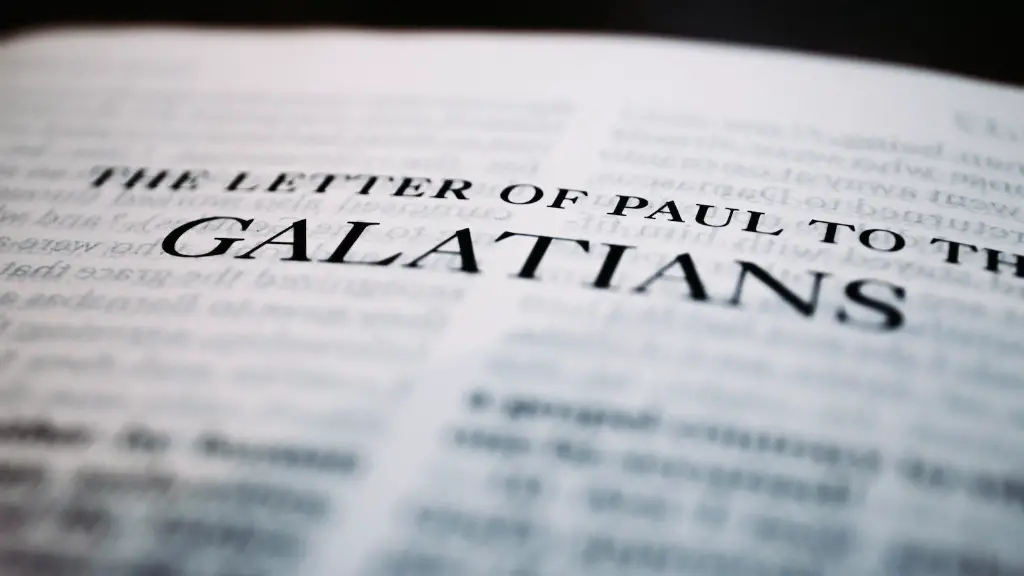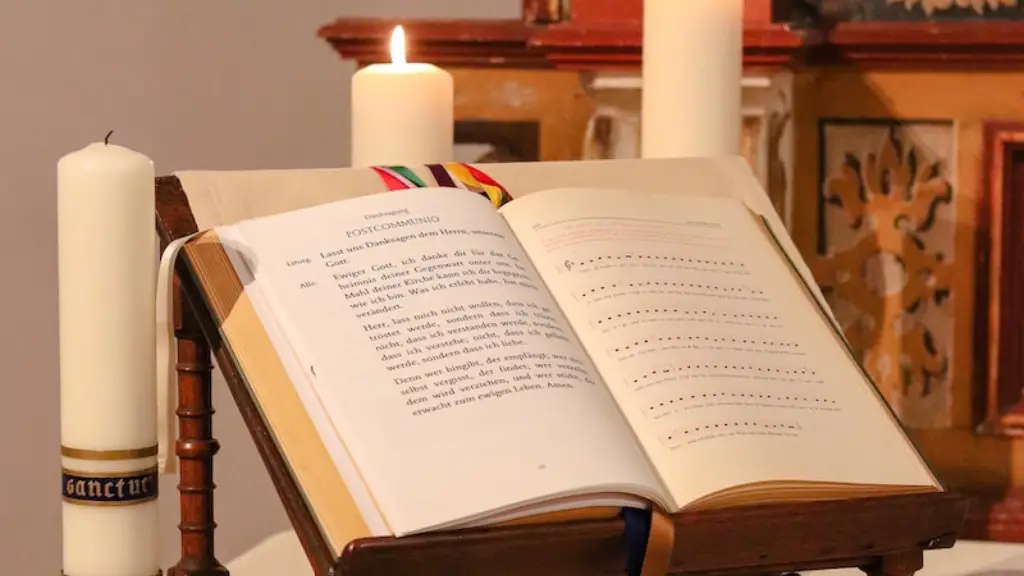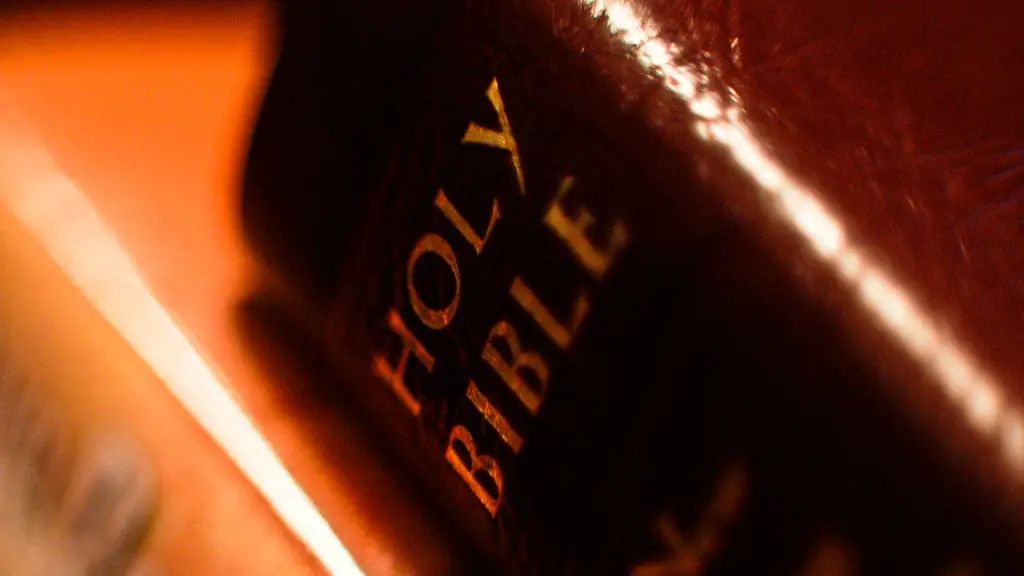Moab is an important figure in the Bible and has been a subject of much discussion among religious scholars and theologians alike. He is mentioned in the Hebrew Bible over ten times and is linked to Abraham and his family in a variety of ways.
In the Old Testament, Moab is given as the ancestor of a tribal people in the eastern part of the Jordan Valley. He is identified as the son of Lot, Abraham’s nephew. Lot was the son of Haran and Abraham’s brother, making Moab Abraham’s grand-nephew.
According to the Bible, Moab had two sons, which gave rise to the two distinct tribes known as the Moabites and Ammonites. These two tribes would become rivals in the region. Moab is also mentioned in other parts of the Bible, such as prophetic passages, in relation to these two tribes and the related rivalry between them.
Moab is first mentioned in the account of Lot’s two daughters in Genesis 19, who gave birth to the Moabites and Ammonites after the destruction of Sodom and Gomorrah. It is believed that this is symbolic of the rivalry between Moab and Ammon, as well as their relationship with Abraham’s family.
Jacob, the son of Isaac and grandson of Abraham, made a covenant with Moab’s descendants, the Moabites. This covenant gave them a special covenant relationship with the Israelites. This covenant relationship is also discussed in the book of Numbers, where the Moabites were given territory and peace as part of the agreement.
Moab, then, is an important figure in the Bible and his story is a tale of feuding and reconciliation between two branches of Abraham’s family. Despite the rivalry between them, they were ultimately united in a covenant that formed a lasting connection between them.
King Mesha and the Moabite Stone
King Mesha is a well-known figure in the Bible and is also referred to as the “King of Moab”. His name is mentioned in the Book of Kings and in 2 Kings, where he is described as a powerful king who fought against the Israelites in the 9th century BCE.
King Mesha is also known for his great historical accomplishments, such as the Moabite Stone, an inscribed stone pillar from the 9th century BCE. This pillar is believed to have been erected in Mesha’s honor, and it records his reign and the battles and victories he achieved. The inscription tells of his victory over Israel and how he was able to restore the land of Moab. This stone has provided archaeologists with a great deal of information about the Moabite culture and society.
The Moabite Stone is an important artifact for understanding the history and culture of the Bible and the Moabites. It is an essential element of archaeological and historical research as it provides insight into the relationship between the Moabites and the Israelites during this time.
Moab and Religion
Moab is also a figure in traditional religion, most notably in Orthodox Christianity. According to the Orthodox Christian faith, Moab was an uncle of John the Baptist. This is reflected in the sacred icons of the Orthodox Church, which depict Moab accompanied by two doves, which represent his sons.
In Islam, there are various interpretations of what role Moab plays, but he is generally seen as an ancestor of the Prophet Muhammad, who is descended from him through Ishmael. This view is also expressed in Islamic writings and traditions.
Moab is therefore an important figure in both the Bible and traditional religions, and serves as a link between different cultures and religions. He is a figure of significance in Abrahamic religions, and is a representation of their shared histories and relationship.
The Symbolism of Moab
The story of Moab has become a powerful symbol in the Bible, and many theologians and scholars have studied it for its symbolism and interpretation. It is generally seen as a metaphor for the human journey, in which Moab serves to represent the struggles and hardships along the way.
The rivalry between the Moabites and Ammonites is also seen as a symbol for the conflict between the spiritual and physical world. The reconciliation between Moab and the Israelites represents a metaphor for the reconciliation between our own inner and outer lives, and the union of body and soul.
The Moabite Stone is seen as an important representation of the Union between God’s law and man’s action. It is believed that this stone symbolizes the journey of faith, in which humans learn to obey and live according to God’s will.
In conclusion, Moab is an important figure in the Bible and in traditional religion. He is a powerful symbol of faith and reconciliation and his story is a powerful metaphor for the human journey.
Moab’s Link to Herod
Moab is linked to another important figure in the Bible, King Herod, who is also referred to as the “King of the Jews”. Herod is a descendant of Moab, through his mother, and is therefore related to the Moabites.
Herod is an important figure in the Bible, often associated with the building of the great temple in Jerusalem. He is seen as a cruel and tyrannical ruler, and his story is a cautionary tale about the dangers of abusing power.
It is believed that Moab’s link to Herod is symbolic of the dangers of misusing one’s power, as well as being a reminder of the importance of being faithful to God and living according to his will.
Herod’s reign is an important element in the Bible and he is seen as an example of how one should not rule. Moab’s connection to him serves to highlight the importance of trust and obedience to God, and serves as a reminder of the consequences of sin.
Moab’s Legacy
The legacy of Moab is a powerful one, and he remains an important and prominent figure in the Bible and in traditional religion. He is seen as a powerful symbol of faith and trust, as well as a reminder of the importance of being faithful to God.
His story is a cautionary tale about the dangers of misusing power, as well as a reminder of the importance of reconciliation and understanding between rivals. Moab is a powerful figure who serves as an important example for future generations.
The legacy of Moab is a powerful one, and his story of faith and reconciliation is one that will continue to inspire and challenge people for many generations to come. He is an important figure in both the Bible and traditional religion, and will remain so for many years to come.
Moab in Modern Times
Moab is a figure who has continued to be of significance in both religion and culture in modern times. He is often referenced in religious texts, as well as in popular culture.
For instance, in the popular book “The Lord of the Rings” by J.R.R. Tolkien, the fortress of Moab is a place of refuge and safety for the protagonists. In this way, Moab’s legacy is still being told and spoken of today.
Moab is also an important figure in the Islamic faith, and there are various stories told in Islamic texts and traditions about him. He is seen as an ancestor of the Prophet Muhammad, and is therefore important in the Islamic faith.
His legacy is also kept alive in various artwork and artifacts, such as the Moabite Stone and other artifacts from the 9th century BCE. These artifacts are essential for understanding the history of Moab and the culture of the Moabites.
Therefore, Moab is an important figure in both religion and culture, both ancient and modern. His legacy is a powerful one, and his story of faith and reconciliation will continue to inspire and challenge people for many years to come.





